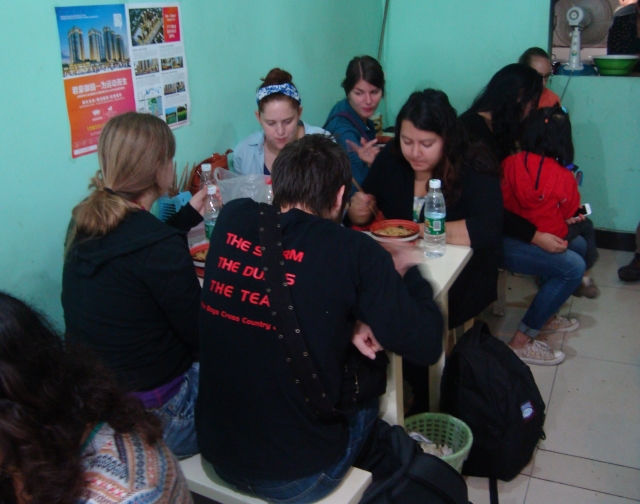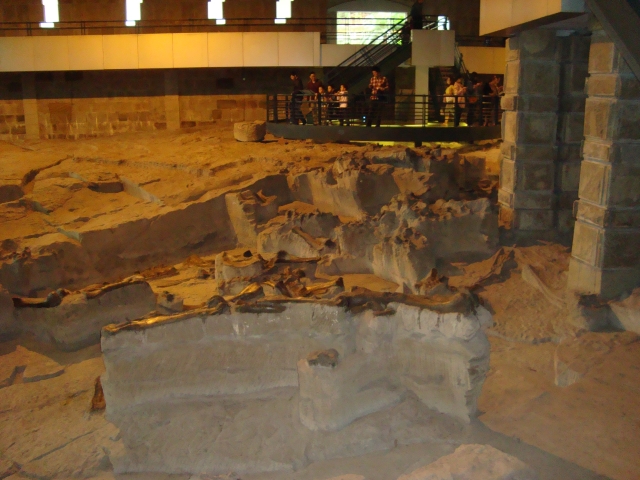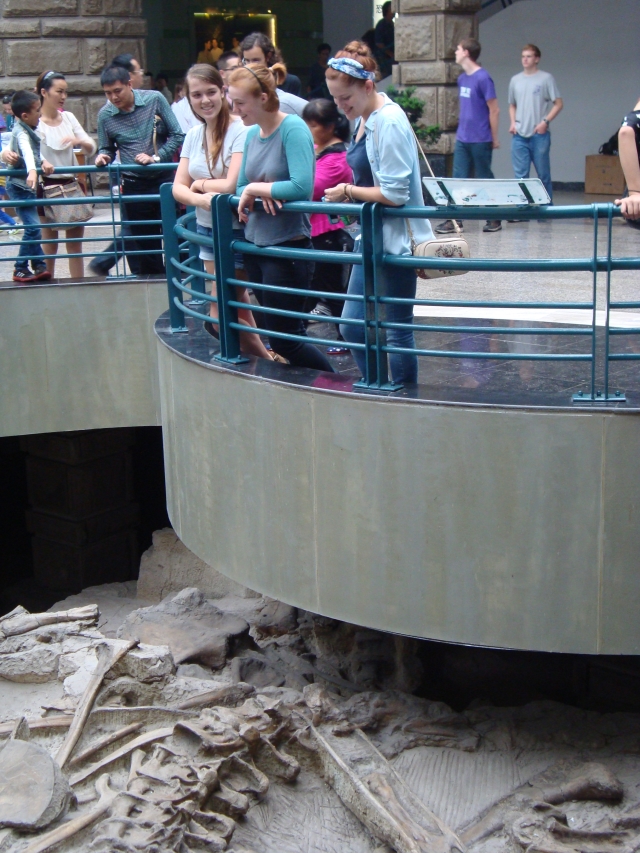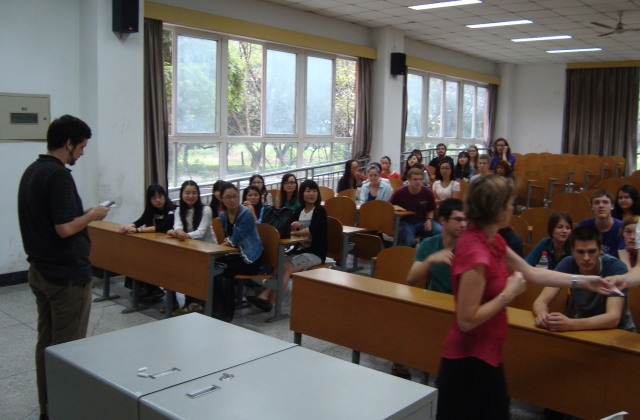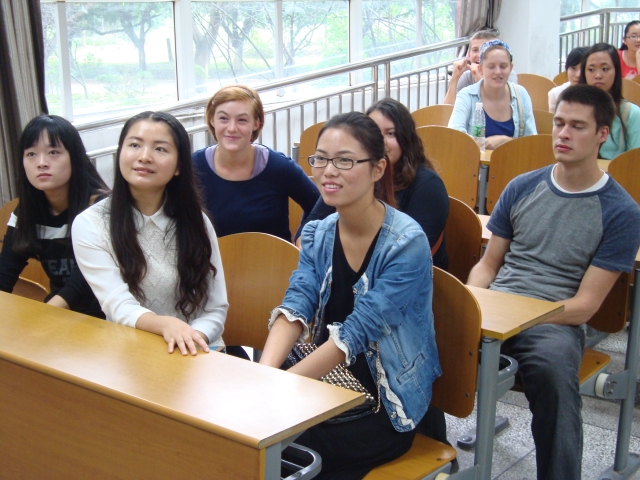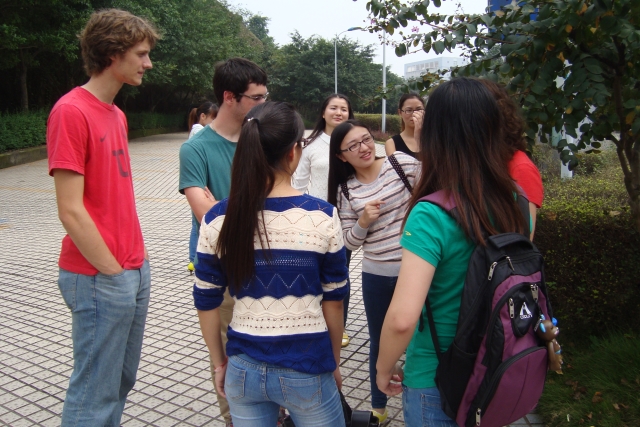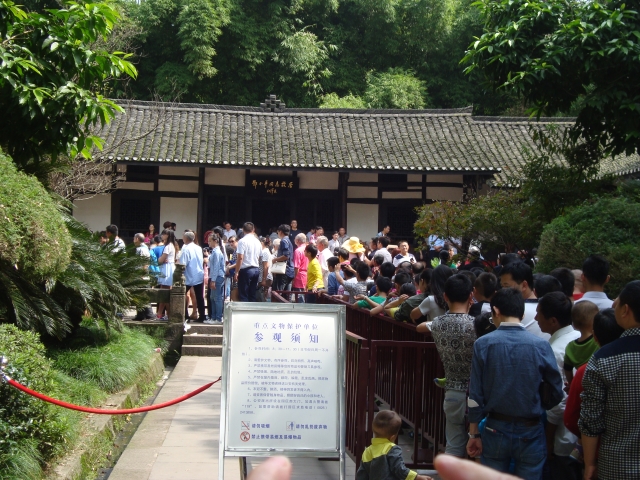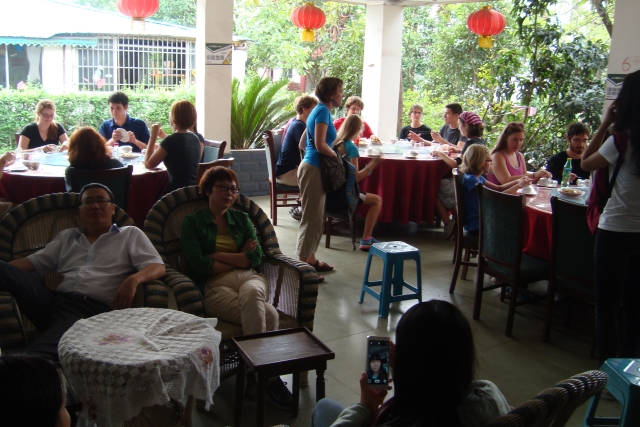National Week Travel
October 1-7 is National Week in China, a week-long vacation commemorating the end of the Chinese civil war in 1949 and the establishment of the People’s Republic of China. Schools at all levels are closed, so our classes at China West Normal University were suspended. Although roads and tourists destinations are crowded during this week, we used three of the open days in our schedule for field trips.
On October 1 and 2 we visited Zigong, a city about three and a half hours south of Nanchong. Matthew Amstutz, a China SSTer from 2011 who is now teaching English at Sichuan University of Science and Engineering (in Zigong) with Mennonite Partners in China, was our host.
The first day we visited the Zigong Dinosaur Museum. Zigong is home to one of the three largest deposits of dinosaur fossils in the world. Hundreds of complete skeletons of plant- and meat-eating dinosaurs from the Jurassic Period have been found here, resulting in competing theories as to why there are so many fossils in this place. The fossils are somewhat high in arsenic, leading some scientists to believe that arsenic killed the herbivores, whose arsenic-laced bodies then poisoned the carnivores that came to eat their remains. Another theory holds that the dinosaurs all died in different places, but their skeletons were all washed to this location by various rivers or a flood. In any case, the region is uniquely rich in fossils. A distinctive feature of the museum is that it includes a large enclosed area from which fossils were uncovered but not fully excavated, allowing visitors to see, up close, what a fossil dig area looks like and what the various stages of a fossil dig reveal.
The geological features that fossilized the dinosaur bones in Sichuan are related to the unusually rich natural gas and oil deposits in the area, as well as the fact that the Sichuan basin has salt brine trapped below the ground surface. Beginning centuries ago, Sichuan farmers around Zigong began drilling wells and bringing up brine which they dried and purified to produce salt. We visited the Zigong Salt Museum that tells the remarkable history of engineering in this region and the chemistry of salt production. Using fairly primitive, yet ingenious, tools, wells in Zigong were drilled to depths that were not matched in the West for centuries. Zigong farmers designed extraordinary tools to patch well shafts, recover broken or lost equipment, and seal off various levels within a single well shaft. By 1940, a surprisingly large percentage of all the salt consumed in China was produced in the town of Zigong. (Today the majority of China’s salt is sea salt products along the country’s east coast.)
We also spent a good part of October 2 in small groups exploring Zigong with some of Matthew’s students – all English majors – who had stayed around for the first few days of their vacation.
Friday, October 3 we visited the birthplace of Deng Xiaoping, China’s paramount leader from 1978 to 1992, and the architect of the country’s current economic “reform and opening.” Deng ended the rural communes, launched “special economic zones” for market-driven development, and otherwise set in motion the dramatic changes and dynamic society that marks contemporary China. Although some of Deng’s leadership decisions have been criticized in the West, he is almost universally revered in China, especially because he, too, despite his high status within the party, suffered during the Cultural Revolution of 1966-1976, which has allowed ordinary people to identify with him. As well, he negotiated the return of the British colony of Hong Kong and the Portuguese colony of Macau to China, which was a source of great national pride.
Despite the very long lines at the museum that day, we were moved to the front of the line and given a special entrance as a group of foreign VIP visitors. This special treatment left some of us feeling a bit uncomfortable, as we leapfrogged hundreds – perhaps a couple thousand – Chinese visitors standing in the sun while staff led us past them to the door.
At lunch we ate in a small restaurant operated by distant relatives of Dend Xiaoping’s mother.
Some of us spent the balance of National Week in Nanchong, but many SSTers spent at least one or two days in additional excursions with their host family, visiting Chengdu, Leshan, local hot springs, and other places. On Sunday morning, October 5, a few of us who were in Nanchong attended worship at the Nanchong Christian Church.

